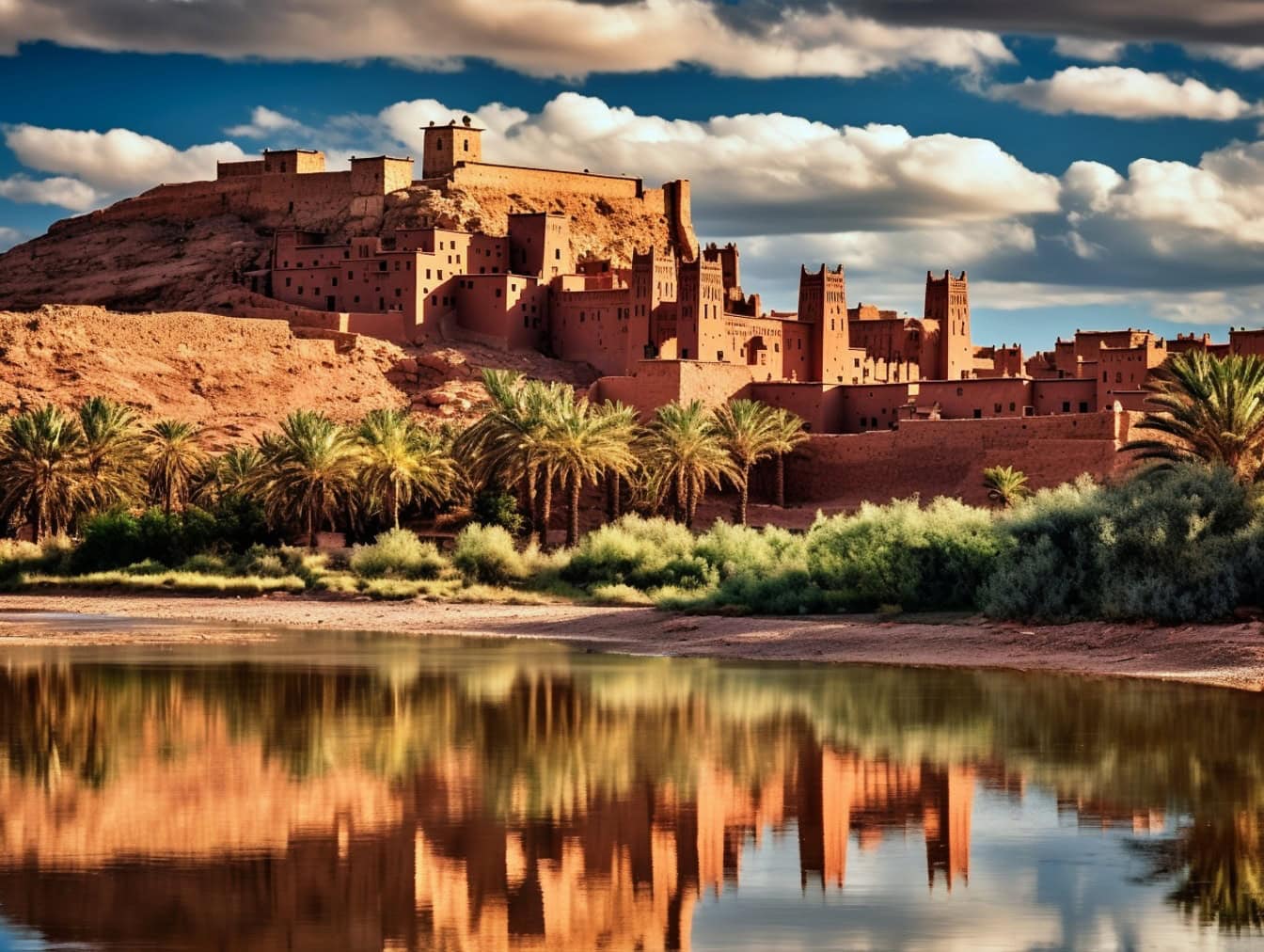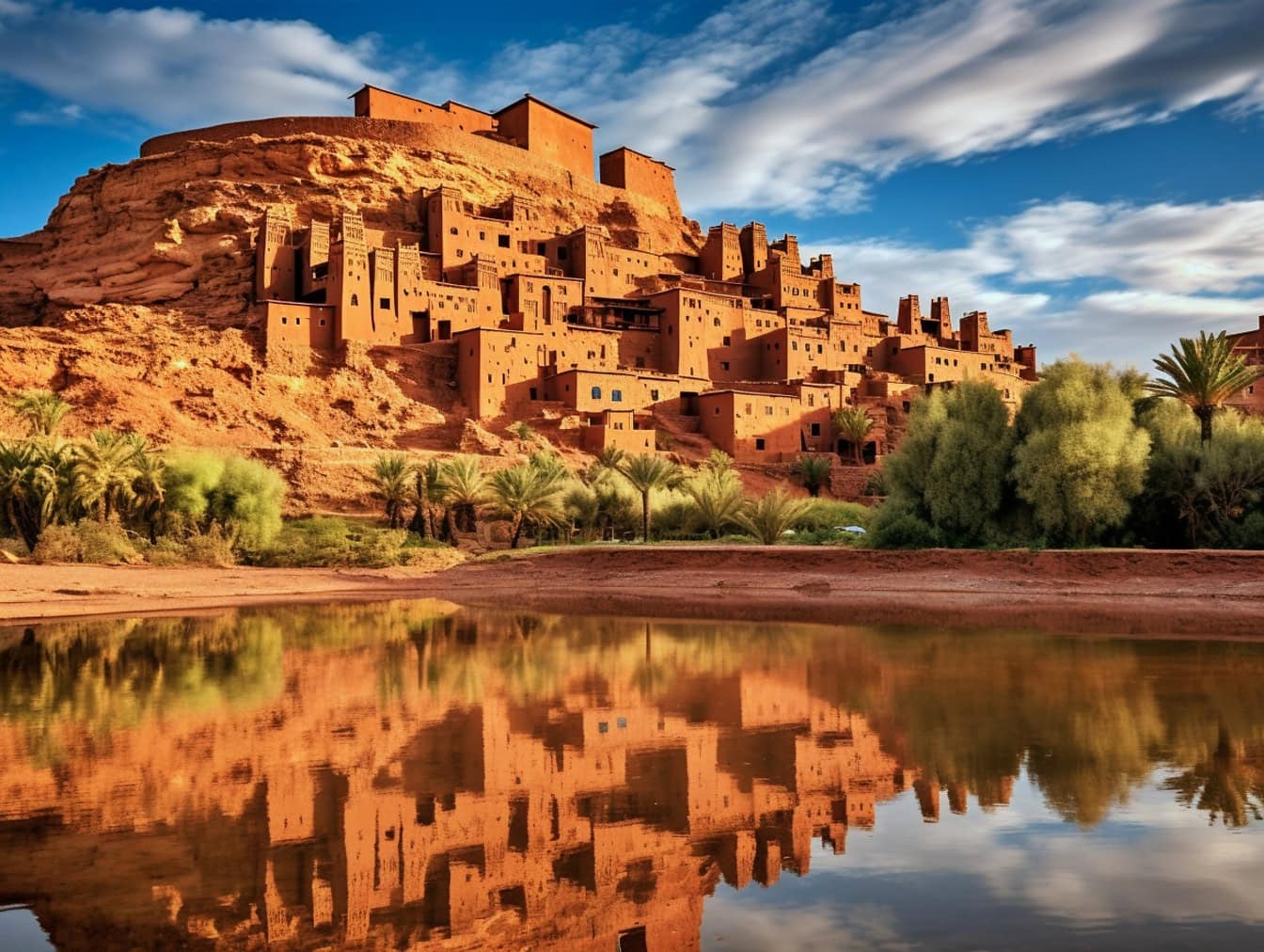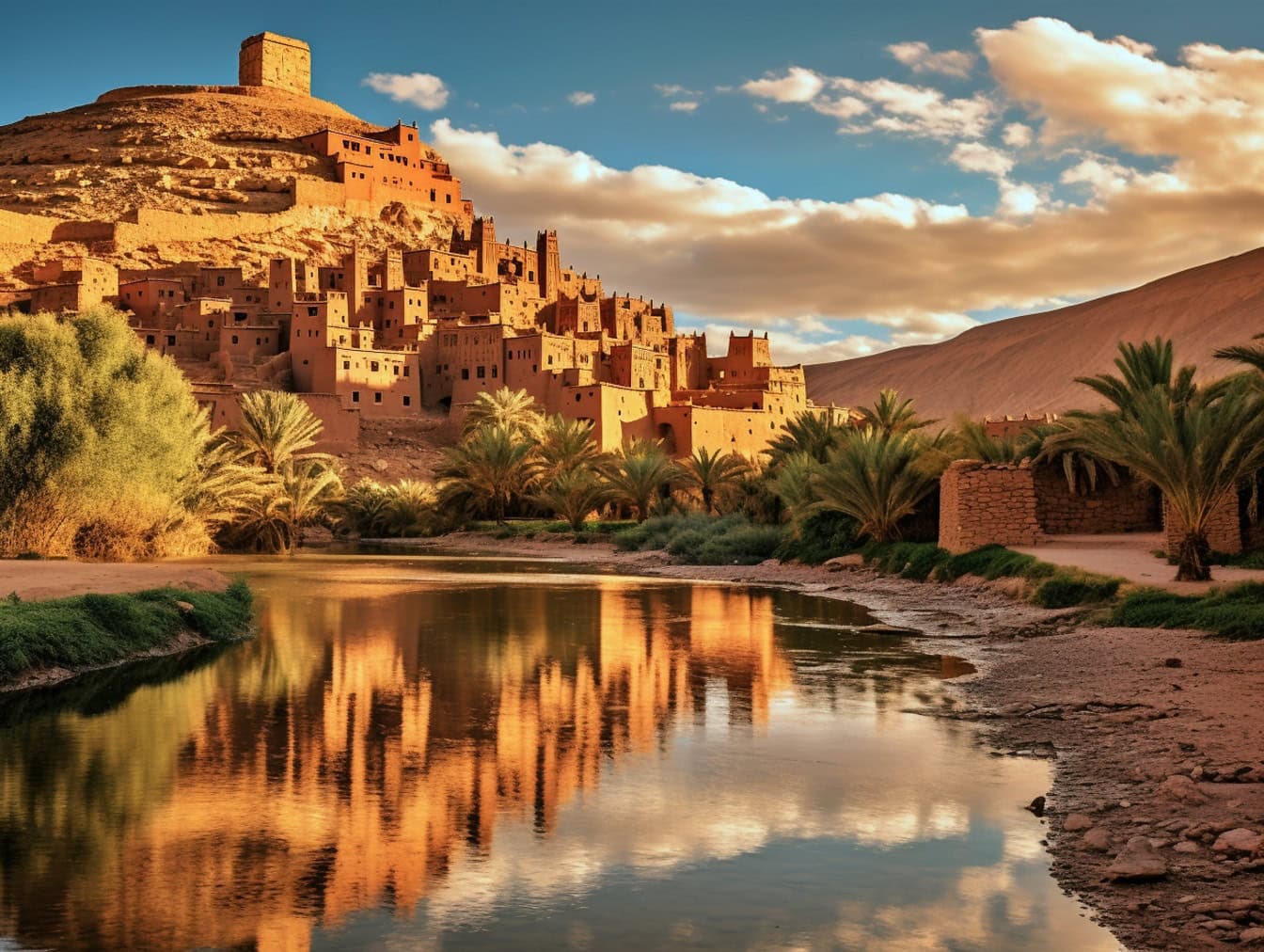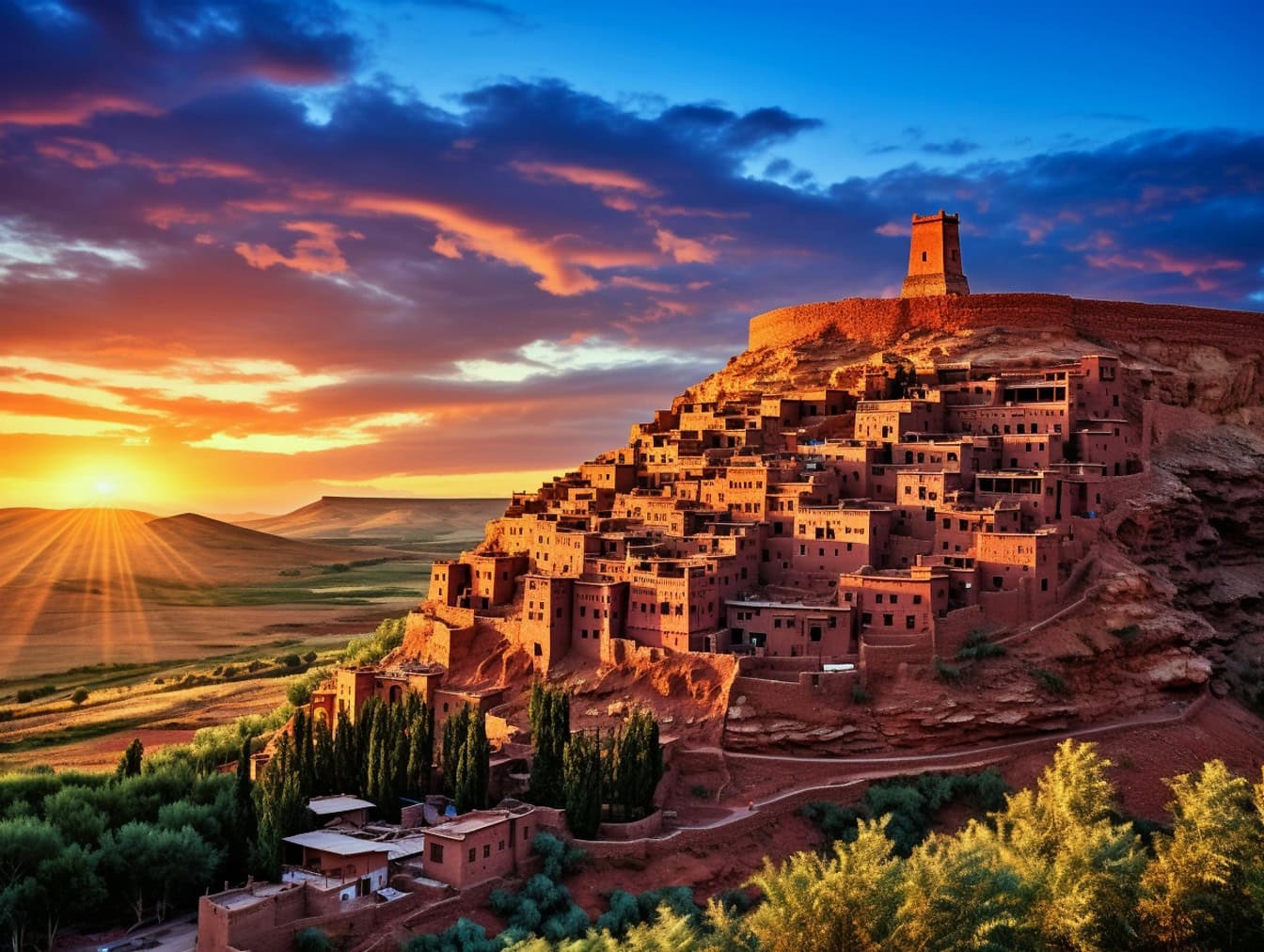Ait Benhaddou is a historic fortified village, or ksar, located in the foothills of the High Atlas Mountains in Morocco. This UNESCO World Heritage Site is renowned for its striking traditional earthen architecture and its role as a backdrop for numerous films and television series. Aït Benhaddou offers visitors a glimpse into Morocco’s rich cultural heritage and its ancient way of life.
Morocco’s breathtaking landscapes hold a treasure trove of historical wonders, and the fortified village of Ait Benhaddou is a jewel in its crown. This UNESCO World Heritage Site, nestled amidst the majestic Ounila Valley, transports you back to a bygone era, offering a glimpse into medieval Moroccan life.
Ait Benhaddou History

Origins
Ait Benhaddou dates back to the 11th century when it was established as a strategic trading post along the caravan routes between the Sahara and Marrakech. The village played a crucial role in the trans-Saharan trade, facilitating the exchange of goods such as salt, gold, and ivory.
Architecture
The ksar of Ait Benhaddou is a remarkable example of traditional Moroccan earthen architecture. The village is built using a mixture of clay and straw, which helps to insulate the buildings against the extreme temperatures of the desert. The structures are fortified with defensive walls, corner towers, and gates, reflecting the need for protection in a historically volatile region.
Layout and Features

Ksar Design
Aït Benhaddou is composed of tightly packed houses and communal buildings, including granaries, a mosque, a kasbah (fortified house), and a caravanserai (inn). The layout of the village is designed to maximize security and communal living, with narrow winding streets and open courtyards.
Granaries
The village’s granaries are particularly notable for their ingenious design, allowing for the storage of grain and other foodstuffs in a climate-controlled environment. These granaries were vital for the community’s survival during periods of siege or drought.
Defensive Features
The village’s defensive features include high walls made of pisé (rammed earth), fortified gates, and watchtowers that provided a vantage point for spotting potential invaders. The ksar’s strategic location on a hilltop also added to its defensive capabilities.
Ait Benhaddou Cultural Significance

Traditional Lifestyle
Aït Benhaddou offers a fascinating insight into the traditional lifestyle of Morocco’s rural communities. The village has preserved many of its customs and practices, including communal living and local craftsmanship. The inhabitants of Aït Benhaddou were traditionally involved in agriculture, animal husbandry, and trade.
Film and Television
Aït Benhaddou has gained international fame as a filming location for many notable films and television series. Its picturesque and well-preserved architecture has made it an ideal setting for productions such as “Lawrence of Arabia,” “Gladiator,” “Game of Thrones,” and “The Mummy.” This has also contributed to its popularity as a tourist destination.
UNESCO World Heritage Site
Recognition
In 1987, Aït Benhaddou was designated a UNESCO World Heritage Site in recognition of its cultural, historical, and architectural significance. The designation has helped to preserve the village and promote sustainable tourism.
Preservation Efforts
Efforts to preserve Aït Benhaddou have included the restoration of key buildings, the promotion of traditional construction techniques, and the involvement of the local community in conservation activities. These efforts aim to maintain the village’s authenticity and ensure its survival for future generations.
Visiting Ait Benhaddou
Accessibility
Aït Benhaddou is accessible from the city of Ouarzazate, which is approximately 30 kilometers away. Ouarzazate itself is often referred to as the “Gateway to the Sahara” and is a popular starting point for tours to Aït Benhaddou and other attractions in the region.
Exploring the Ksar
Visitors to Aït Benhaddou can explore the ksar on foot, wandering through its narrow alleys and visiting the various historical structures. The climb to the top of the hill offers breathtaking views of the surrounding landscape and the opportunity to appreciate the village’s strategic location.
Cultural Experiences
Tourists can also engage with the local community, learn about traditional crafts, and enjoy Moroccan hospitality. Local guides are available to provide insights into the history, architecture, and cultural practices of Aït Benhaddou.
Best Time to Visit Ait Benhaddou
The best time to visit Aït Benhaddou is during the spring (March to May) or fall (September to November) when the weather is mild and comfortable for exploring.
Aït Benhaddou is a captivating destination that showcases the rich history and cultural heritage of Morocco. Its unique architecture, historical significance, and stunning scenery make it a must-visit for travelers seeking an authentic and immersive experience in Morocco.
Planning Your Visit to Ait Benhaddou:
Ait Benhaddou is easily accessible from Marrakech, a major tourist hub in Morocco. Guided tours are available to provide deeper insights into the village’s history and culture. Remember to dress modestly, especially if visiting during prayer times.
Ait Benhaddou awaits, beckoning you to delve into its rich tapestry of history and culture. Embark on this journey and be captivated by the timeless beauty of this enchanting Moroccan gem.
Have you ever visited the Ait Benhaddou? Share your experience in the comments below!








0 Comment